Spring has arrived and brought a rainbow of colors along with it! From the most vibrant of yellows to the palest of pinks, keep an eye out for these April wildflowers the next time you're outside!
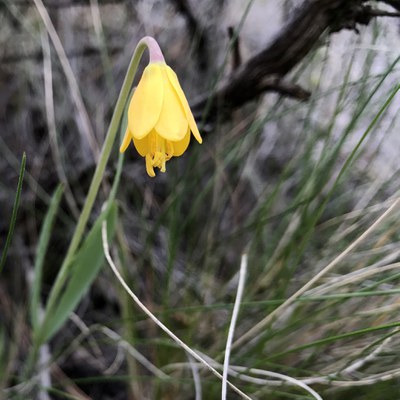
Yellow bells (Frittillaria pudica)
Other common names: Yellow fritillary, Yellow missionbells, Golden bells, Gold bells
A beautiful yellow, pendant-shaped lily that can be found in grasslands to pine forest. Yellow bell-shaped flowers are 7/8" long and can be yellow to brownish-orange. Leaves are grasslike. Stem grows up to one foot tall and holds 1-2 nodding flowers.
Bloom time: All spring
Land Trust Preserves: You can spot yellow bells at Whychus Canyon Preserve.
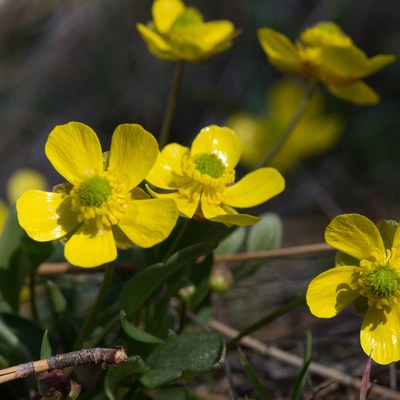
Sagebrush buttercup (Ranunculus glaberrimus)
Other common names: Smooth buttercup
One of the first wildflowers of the season! These yellow flowers can turn white as they age. They are found in sagebrush flats, pine forests, and areas with juniper. The flowers have five petals that are 1/2" long atop a single stem. Petals are glossy, often looking wet with dew.
Bloom time: All spring
Land Trust Preserves: You can spot sagebrush buttercups at Whychus Canyon Preserve and Camp Polk Meadow Preserve.
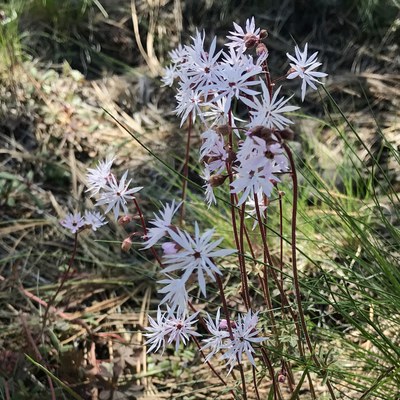
Prairie star (Lithophragma parviflorum)
Other common names: Prairie rockstar, Prairie woodland-star
Reminding us that nature is fragile, this early bloomer has a delicate, white to lavender-pink, irregular flower atop a slender red stem. Prairie stars are found in sagebrush flats to pine forests. Flowers have five petals that are 1/4" long, each petal divided into three lobes. Flowers bloom atop a 4-12" tall stem.
Bloom time: Early spring
Land Trust Preserves: You can see prairie stars at Whychus Canyon Preserve or on a Land Trust outing at Priday Ranch.
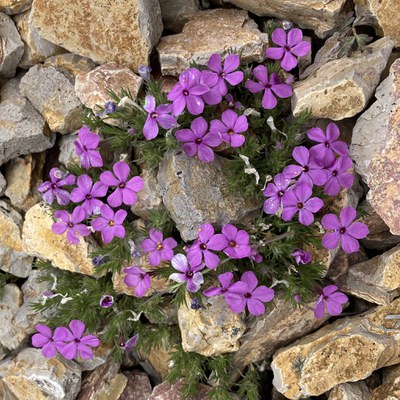
Spreading phlox (Phlox diffusa)
Other common names: Mat phlox
This low-growing flower prefers rocky crevices and exposed locations. These beauties always astound with their pop of color—flowers have five pink-purple-white petals (and can often be neon pink!). Adapted to extreme environments, cushion-like plants like phlox often have taproots 8-15' deep!
Bloom time: Spring
Land Trust Preserves: You can spot phlox at Whychus Canyon Preserve and at the Land Trust protected Alder Springs. Join a Land Trust outing to see these wildflowers at Priday Ranch, Rimrock Ranch, and Willow Springs Preserve.
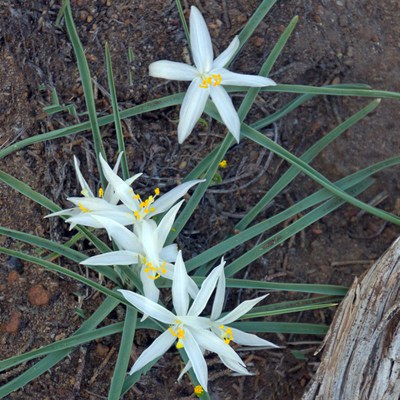
Sand lily (Leucocrinum monatanum)
Other common names: Common starlily
Scattered along sagebrush flats and pine forests, sand lilies can often look like bunches of tissue paper dotting your view. It grows in rosette-like bunches with 4-8 white flowers per bunch. Flowers have six petals; leaves are 4-8" long, flat, and linear. While it's still a little early to spot these delicate beauties, their leaves are starting to emerge, if you look closely.
Bloom time: Late spring
Land Trust Preserves: You can see sand lilies at most Land Trust Preserves! Look for them at Camp Polk Meadow Preserve, Indian Ford Meadow Preserve, and Whychus Canyon Preserve. While out on our Walks + Hikes, you can also spot them at Paulina Creek Preserve and Willow Springs Preserve.
While spring wildflowers can be fleeting (and bloom at variable times based on any number of environmental factors—like late winters!), we hope you enjoy the rainbow of colors that nature provides this time of year! Happy wildflower viewing!
**Although we make every effort to be accurate in our flower identification, it is often difficult to tell the differences between subspecies from a photo.**
Learn more:
- See what's going to be blooming next with May and June Wildflowers to Enjoy
- Would you like to see some of these beautiful blooms in your own garden? Check out your options with Pollinator Plants to Grow
- It might still be a little early, but come early summer, you'll want to be out exploring Wildflowers of the Ochocos


